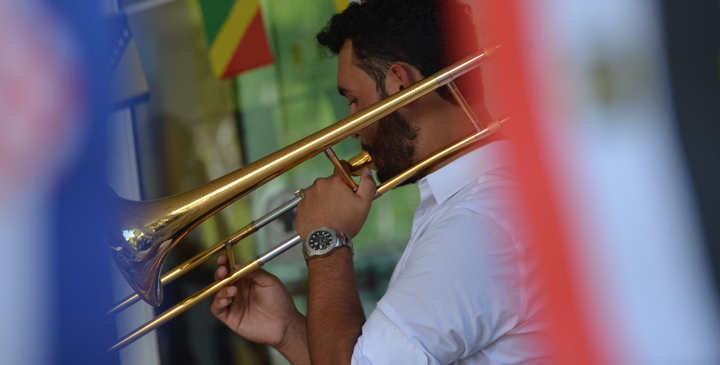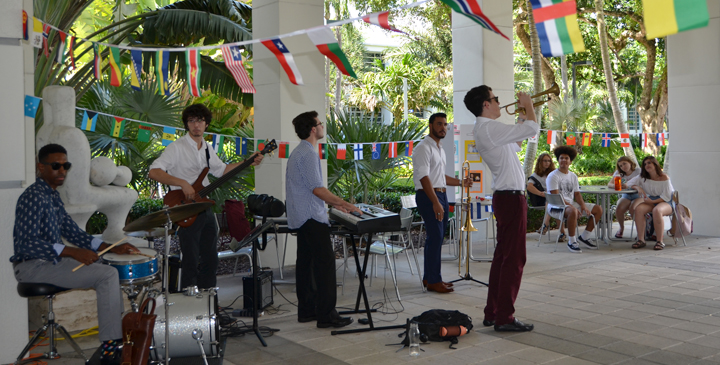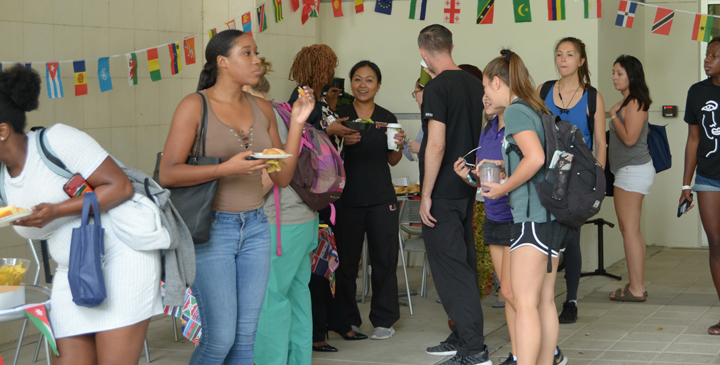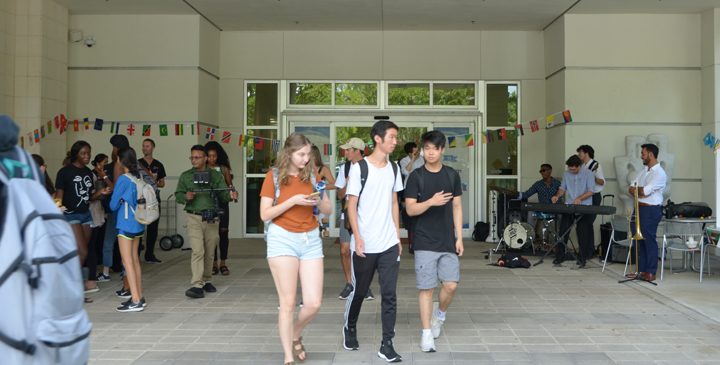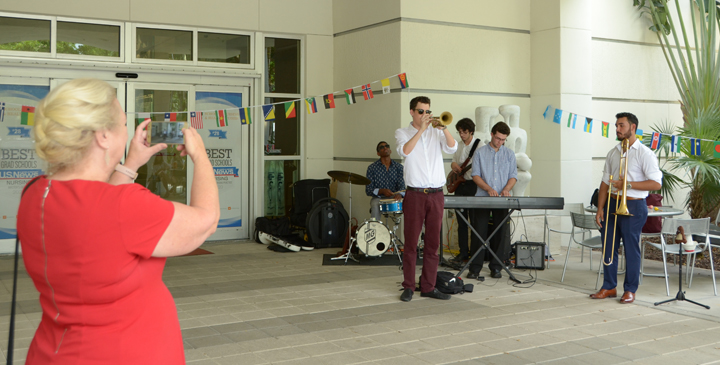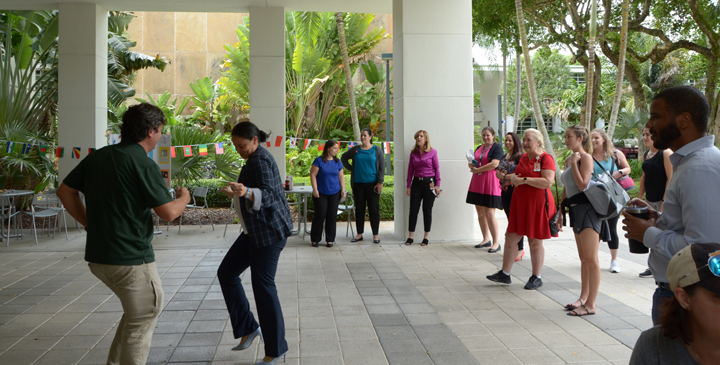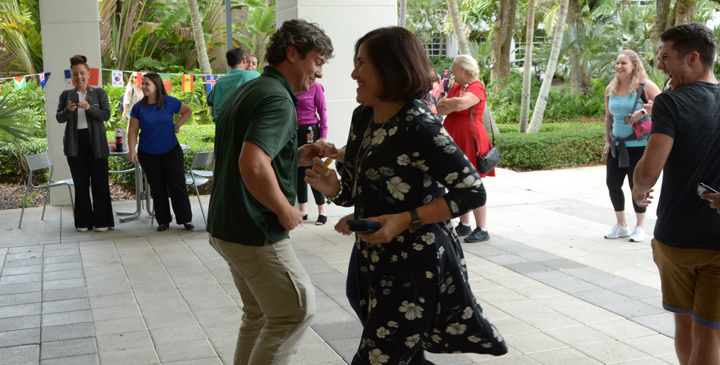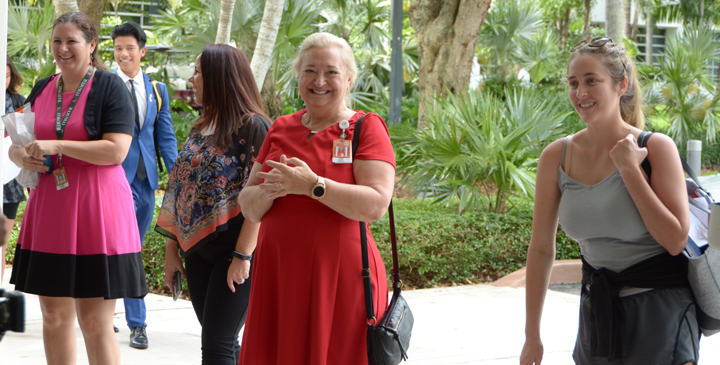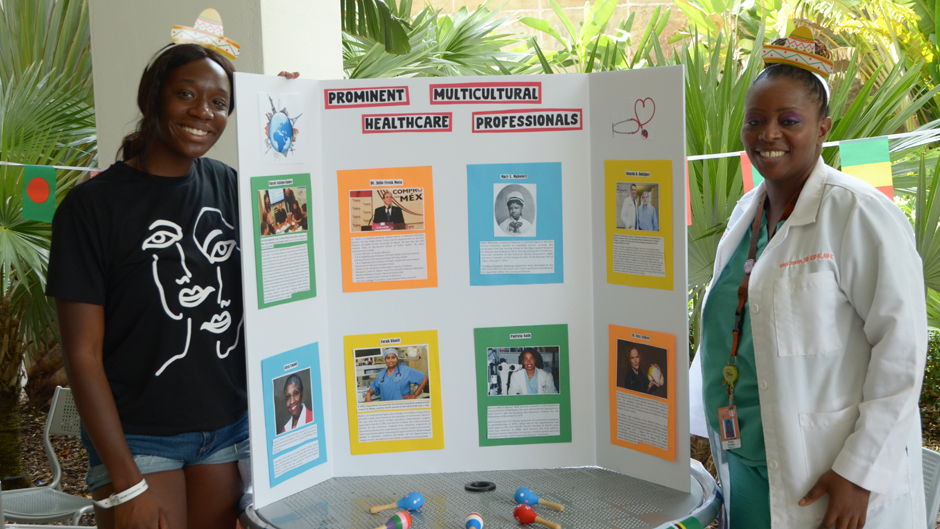The Multicultural Nursing Student Association (MNSA) helped the University of Miami community continue its celebration of National Hispanic Heritage Month by hosting Multicultural Day this past Monday. The lunchtime gathering in the School of Nursing and Health Studies courtyard featured traditional foods like croquetas and empanadas, lively music from a jazz quintet, and the chance to learn about a variety of cultures.
One poster on display, for example, highlighted the achievements of prominent multicultural health care professionals, including the U’s own President Julio Frenk. At another table, MNSA member Diana Gibbons, a student in the accelerated B.S.N. program, shared items from home that represent her U.S. Cuban upbringing. Those included finger snacks like bocaditos and plantain chips, as well as a tin of Bustelo coffee, a case of dominoes, and a bottle of the ever-present purple cleaning fluid Fabuloso. “I was born here, so technically I’m American,” she said, “but I’ve always identified as Hispanic. The food, the culture, it’s a part of me and part of my personality.”
Nyota Edjidjimo, the president of MNSA, coordinated Multicultural Day with the SONHS Office of Student Services and MNSA faculty advisors LaToya Lewis-Pierre and Kenya Snowden. “This event is a small introduction to the importance of diversity and embracing our differences,” said Edjidjimo, a senior B.S.N. student. “Coming together through frequent events like this, we can also become more culturally competent and skilled practitioners.”
SONHS kicked off National Hispanic Heritage Month last month with its annual Hemispheric and Global Initiatives Research Day, welcoming new global partners from Costa Rica, Colombia, Peru, and Mexico to discuss research opportunities available to SONHS participants in the Minority Health and Health Disparities Research Training program. Keynote speaker Maria Amalia Pesantes, from Universidad Peruana Cayetano Heredia, shared research on chronic care in Peru, and 10 SONHS undergraduate students presented posters on global health disparities research they conducted over the summer with mentors in Jamaica, the Dominican Republic, Chile, Spain, and Australia.
SONHS benefits from a diverse population, with minority students comprising nearly 60 percent of its student body. Nearly one third of students enrolled at SONHS are Hispanic, a ratio representative of national trends. Over the past decade, the Hispanic population has been the principal driver of demographic growth in the United States. As of 2018, the U.S. Hispanic population numbers 59.9 million, or 18.3 percent, making people of Hispanic origin the nation’s largest ethnic or racial minority, according to the U.S. Census Bureau.
National Hispanic Heritage Month got its start in September 1968 as a weeklong observance proclaimed by President Lyndon B. Johnson to recognize the rich culture and contributions of Americans who trace their roots to Spain, Mexico, Central America, South America and Spanish-speaking nations of the Caribbean. In 1988, lawmakers extended the annual observance to span from September 15 to October 15.
